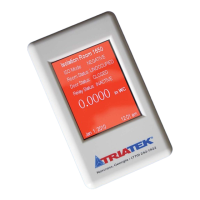PID TUTORIAL
FMS-1650
- 65 -
PV: process variable or measured value
e: error = SP – PV
t: time or instantaneous time (the present)
A high proportional gain results in a large change in the output for
a given change in the error. If the proportional gain is too high, the
system may become unstable. In contrast, a small gain results in a
small output response to a large input error, and a less responsive (i.e,
slower) controller. If the proportional gain is too low, the control action
may be too small when responding to system disturbances. For most
closed-loop control schemes, the proportional gain should contribute
the bulk of the output change.
Integral Term
The integral term (sometimes referred to as reset) is proportional to
both the magnitude of the error and the duration of the error. Summing
the instantaneous error over time (integrating the error) gives the
accumulated offset that should have been corrected previously. The
accumulated error is then multiplied by the integral gain and added to
the controller output. The magnitude of the contribution of the integral
term to the overall control action is determined by the integral gain, K
i
.
The integral term is given by:
where:
K
i
: integral constant (tuning parameter)
SP: setpoint or desired value
PV: process variable or measured value
e: error = SP – PV
t: time or instantaneous time (the present)
: dummy integration variable
The integral term, when added to the proportional term calculated
above, accelerates the movement of the process towards setpoint
and eliminates the residual steady-state error that occurs with a
proportional-only control scheme. However, since the integral term
is responding to accumulated errors from the past, it can cause the
present value to overshoot the setpoint value (cross over the setpoint
and then create a deviation in the other direction).
Derivative Term
The rate of change of the process error is calculated by determining
the slope of the error over time (i.e., its first derivative with respect to
time) and multiplying this rate of change by the derivative gain K
d
. The
magnitude of the contribution of the derivative term (sometimes called
rate) to the overall control action is termed the derivative gain, K
d
.
The derivative term is given by:
where:
K
d
: derivative constant (tuning parameter)
SP: setpoint or desired value
PV: process variable or measured value
e: error = SP – PV
t: time or instantaneous time (the present)
The derivative term slows the rate of change of the controller output
and this effect is most noticeable close to the controller setpoint.
Hence, derivative control is used to reduce the magnitude of the
overshoot produced by the integral component and improve the
combined controller-process stability. However, the differentiation of
a signal amplifies noise and thus this term in the controller is highly
sensitive to noise in the error term, and can cause a process to
become unstable if the noise and the derivative gain are sufficiently
large.
The proportional, integral, and derivative terms are summed to
calculate the output of the PID controller. Defining u(t) as the controller
output, the final form of the PID algorithm is:
where the tuning parameters are:
Proportional gain, K
p
Larger values typically mean faster response since the
larger the error, the larger the proportional term compensation. An
excessively large proportional gain will lead to process instability and
oscillation.
Integral gain, K
i
Larger values imply steady-state errors are eliminated more
quickly. The trade-off is larger overshoot: any negative error integrated
during transient response must be integrated away by positive error
before reaching steady-state.
Derivative gain, K
d
Larger values decrease overshoot, but slow down transient
response and may lead to instability due to signal noise amplification in
the differentiation of the error.
TRIATEK reserves the right to change product specifications without notice.
PID Tutorial

